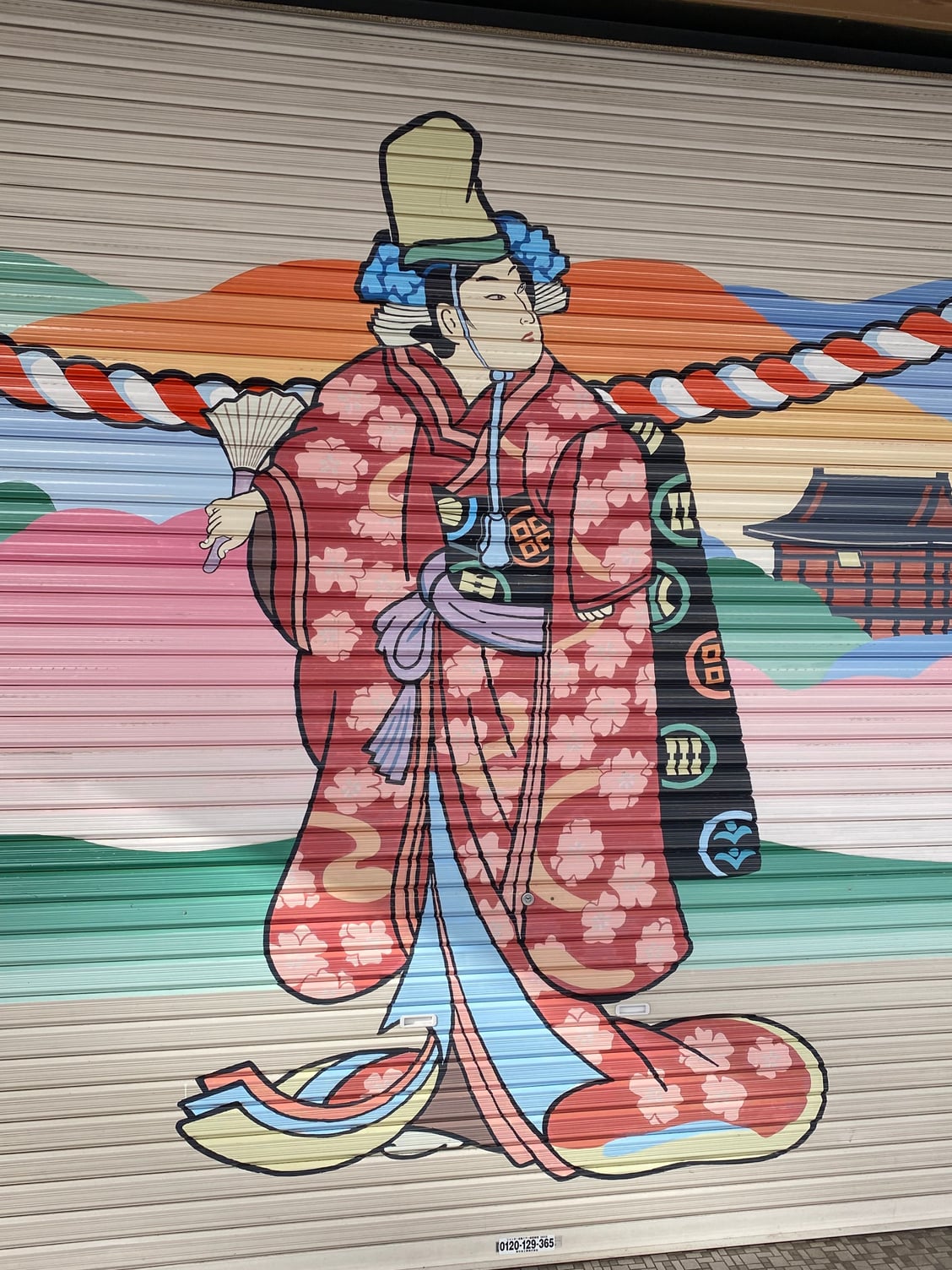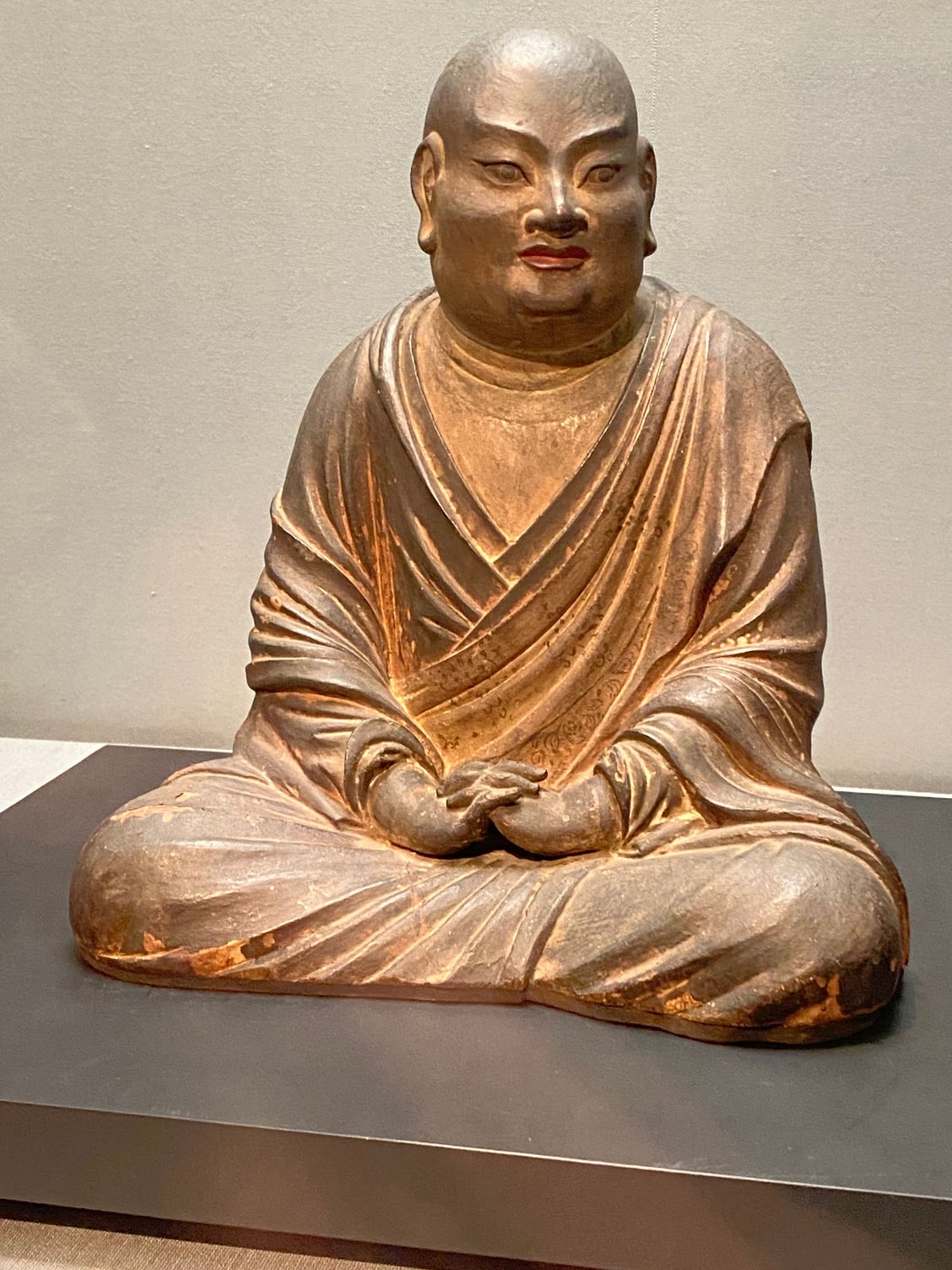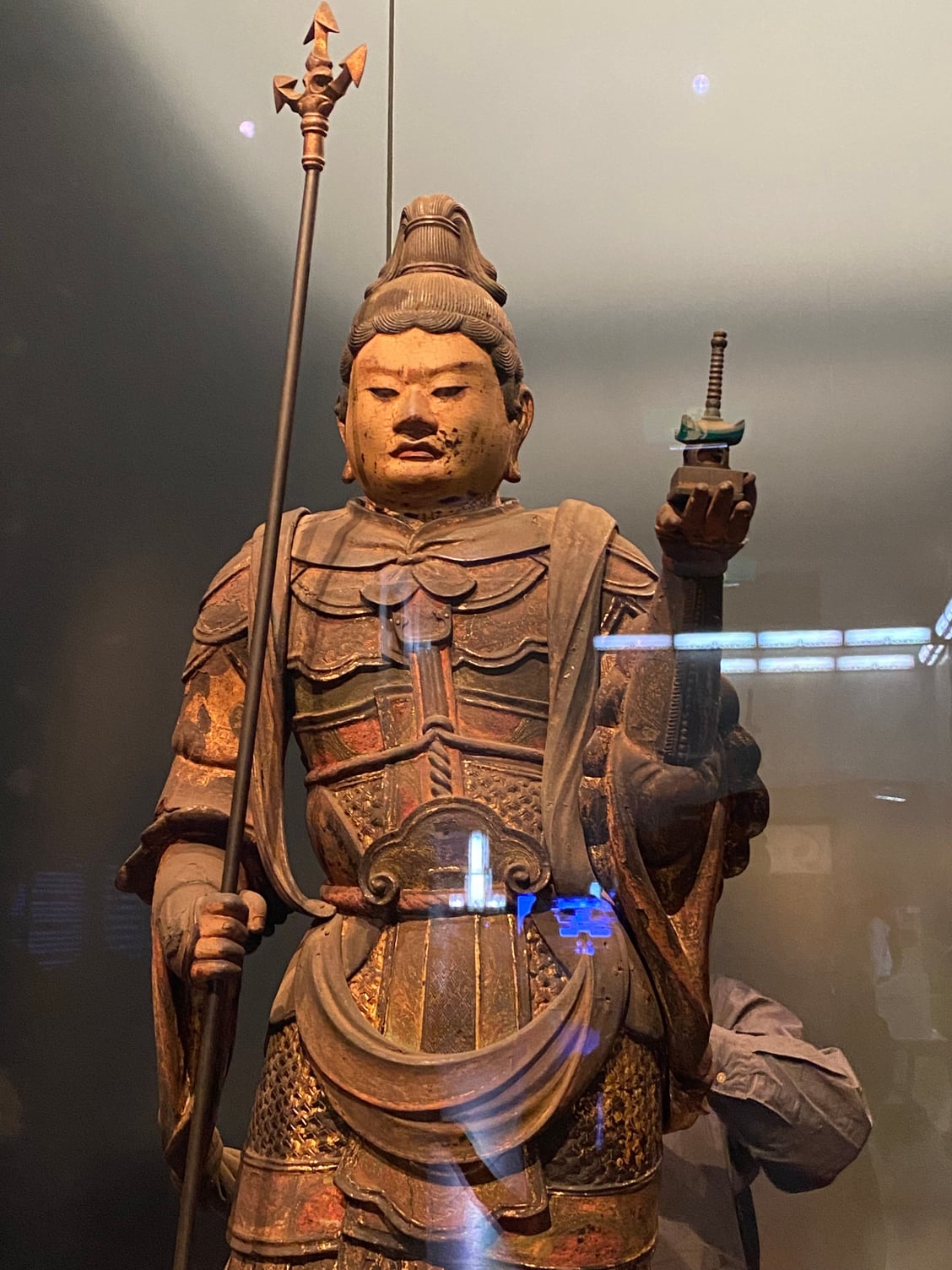First-timersí trip to Japan: 4 weeks, an unexpectedly awesome trip
#1
Original Poster
First-timersí trip to Japan: 4 weeks, an unexpectedly awesome trip
We’re back just over a week from our first trip to Japan and I’m still trying to adjust to the 14 hour time difference. It was a fabulous trip and I’m now truly appreciating how so many folks return to Japan again and again. There is so much to see and do, so making choices was really challenging. And I want to thank the many Fodorites whose advice and suggestions helped to shape our trip: mrwunrfl, ms_go, yestravel, HappyTrvlr, thursdaysd, and tripplanner (whose current TR is nothing short of extraordinary).
Initial thoughts:
I’ll be honest - initially, I wasn’t that keen on going to Japan. It was never at the top of my travel list, but it was a place that M had wanted to see, and we both felt it was important to visit Japan to balance out our Western perspective of the world. In the past, I’ve been drawn to some of the more “exotic” locations in Asia, such as India, Sri Lanka or the countries of SE Asia, so I wasn’t sure how “different” it would be to visit Japan, a first world country to be sure. But it grew on me over the 4 weeks we traveled, and by the end of our trip, I was in tears when we left.
And here’s what I learned - it’s the people of Japan that we met everywhere whose warmth, graciousness and generosity made our experience one of the richest we’ve ever had in our travels. There were few “big” moments in our trip, but so many small moments that it added up to something special. I lost count how many times people walked us somewhere when we asked for directions. Or the time the cafe owner and I discussed CSI thanks to Google Translate (I can still see him smiling and saying “Manhattan!”) When we left, he handed us a package of tea as a gift. This happened repeatedly.
Of course, M had spent months learning a little bit of Japanese and this, I think, made a big difference in our experiences. People were taken by the fact that he could hold a small conversation and this seemed to touch many people. While I could say a few basics, his ability to speak opened up connections over and over again.
It was an amazing and awesome trip.
Our itinerary:
Tokyo/Asakusa- (6) - Richmond Premier Hotel Asakusa
Matsumoto - (3) Matsumoto Maranouchi hotel)
Okuhida onsen - (2) Yarimikan
Takayama - (3) Sumiyoshi Ryokan
Kanazawa -(4) Mitsui Garden Kanazawa
Yamanaka/Kaga onsen region - (2) Yamanaka Onsen Ohanami Kyubei
Kyoto (6) Hotel Mume
General comments about us and thoughts about the trip
We are now in our 70s, and we’re traveling more slowly and cover less territory than we used to. My long list of “things to see and do” got ignored almost immediately! I also find that places with huge crowds are turnoffs, so we didn’t see many of the “big”sites that are generally listed for travel itineraries to Japan. What we discovered, though, were wonderful nooks and crannies, just wandering the streets, poking around small shops, stopping into a temple or shrine (and there are small shrines around every corner!) and appreciating the sight of people who are observing their traditions. That’s one of the many things I loved — the sense of tradition is still rooted in this very modern place.
I began to plan the trip several years ago. These days, biz class is essential and not a luxury (those aging bones don’t do well in cramped quarters!), and we managed to accumulate almost enough miles to get biz tickets to Japan from NYC. I say “almost” because although I began trying to collect miles about 5 years ago, I still needed to purchase additional miles. In the last year, the rate for miles skyrocketed, and, it seemed, everyone wanted to visit Japan, especially since Japan reopened for international tourism much later than many other countries after the pandemic shut down the world. Anyway, I did end up with tickets into Haneda and out of Osaka, so it all worked out.
I looked to balance large cities (ie, Tokyo and Kyoto) with smaller places, like the cities of Kanazawa (mid-sized city), Matsumoto and Takayama, and the onsen regions of Okuhida and Kaga. We had decided not to rent a car, though it meant not visiting some of the smaller, out of the way places. Fortunately, the transportation system is fantastic (more on this later). I also wanted to avoid 1-night stops and to minimize the number of stops we made while also getting a range of experiences. I was especially glad that we stayed in a couple of onsen regions; the first, Okuhida onsen, is in a stunning location. The second, Yamanaka, in the Kaga region, was a bit of a risk since it isn’t a place many westerners seem to go to (and relatively little is written about it), but it turned out to be one of our favorite stops. We were both very happy with the itinerary because it really was exactly what I’d hoped for. Even better than expected, in fact.
I didn’t plan the trip to maximize autumn foliage, but I had hoped we’d get some wonderful color. I’d been following the foliage reports before we left, and it seemed that the autumn foliage peaks were late because of the warm weather. But we did find spectacular color in the Japanese Alps, starting in Matsumoto and through Takayama. Glorious!
Thanks to yestravel and other, I was aware of the option of getting a volunteer guide in some of the Japanese cities. These guides are generally retirees and I sent a request to the respective Goodwill agency about 2 months before our trip. I received emails from a guide in Tokyo and in Kanazawa shortly after submitting the request and we made plans for what we’d see during our correspondence. We paid for travel expenses and any additional expenses during the time together, such as the meal, but otherwise, this was free. It was a pleasure to meet up with and each of them and spend the day touring some of the sites. Our Tokyo guide didn’t speak much English, but he was really enthusiastic and committed to giving us the best possible experience he could. Amazingly, they don’t get paid and don’t accept tips - though we did give them a few token items from NYC as thank-you gifts.
My planning thread will give some background: Japan - first draft itinerary for fall 2023 - feedback appreciated
(more to come....)
Initial thoughts:
I’ll be honest - initially, I wasn’t that keen on going to Japan. It was never at the top of my travel list, but it was a place that M had wanted to see, and we both felt it was important to visit Japan to balance out our Western perspective of the world. In the past, I’ve been drawn to some of the more “exotic” locations in Asia, such as India, Sri Lanka or the countries of SE Asia, so I wasn’t sure how “different” it would be to visit Japan, a first world country to be sure. But it grew on me over the 4 weeks we traveled, and by the end of our trip, I was in tears when we left.
And here’s what I learned - it’s the people of Japan that we met everywhere whose warmth, graciousness and generosity made our experience one of the richest we’ve ever had in our travels. There were few “big” moments in our trip, but so many small moments that it added up to something special. I lost count how many times people walked us somewhere when we asked for directions. Or the time the cafe owner and I discussed CSI thanks to Google Translate (I can still see him smiling and saying “Manhattan!”) When we left, he handed us a package of tea as a gift. This happened repeatedly.
Of course, M had spent months learning a little bit of Japanese and this, I think, made a big difference in our experiences. People were taken by the fact that he could hold a small conversation and this seemed to touch many people. While I could say a few basics, his ability to speak opened up connections over and over again.
It was an amazing and awesome trip.
Our itinerary:
Tokyo/Asakusa- (6) - Richmond Premier Hotel Asakusa
Matsumoto - (3) Matsumoto Maranouchi hotel)
Okuhida onsen - (2) Yarimikan
Takayama - (3) Sumiyoshi Ryokan
Kanazawa -(4) Mitsui Garden Kanazawa
Yamanaka/Kaga onsen region - (2) Yamanaka Onsen Ohanami Kyubei
Kyoto (6) Hotel Mume
General comments about us and thoughts about the trip
We are now in our 70s, and we’re traveling more slowly and cover less territory than we used to. My long list of “things to see and do” got ignored almost immediately! I also find that places with huge crowds are turnoffs, so we didn’t see many of the “big”sites that are generally listed for travel itineraries to Japan. What we discovered, though, were wonderful nooks and crannies, just wandering the streets, poking around small shops, stopping into a temple or shrine (and there are small shrines around every corner!) and appreciating the sight of people who are observing their traditions. That’s one of the many things I loved — the sense of tradition is still rooted in this very modern place.
I began to plan the trip several years ago. These days, biz class is essential and not a luxury (those aging bones don’t do well in cramped quarters!), and we managed to accumulate almost enough miles to get biz tickets to Japan from NYC. I say “almost” because although I began trying to collect miles about 5 years ago, I still needed to purchase additional miles. In the last year, the rate for miles skyrocketed, and, it seemed, everyone wanted to visit Japan, especially since Japan reopened for international tourism much later than many other countries after the pandemic shut down the world. Anyway, I did end up with tickets into Haneda and out of Osaka, so it all worked out.
I looked to balance large cities (ie, Tokyo and Kyoto) with smaller places, like the cities of Kanazawa (mid-sized city), Matsumoto and Takayama, and the onsen regions of Okuhida and Kaga. We had decided not to rent a car, though it meant not visiting some of the smaller, out of the way places. Fortunately, the transportation system is fantastic (more on this later). I also wanted to avoid 1-night stops and to minimize the number of stops we made while also getting a range of experiences. I was especially glad that we stayed in a couple of onsen regions; the first, Okuhida onsen, is in a stunning location. The second, Yamanaka, in the Kaga region, was a bit of a risk since it isn’t a place many westerners seem to go to (and relatively little is written about it), but it turned out to be one of our favorite stops. We were both very happy with the itinerary because it really was exactly what I’d hoped for. Even better than expected, in fact.
I didn’t plan the trip to maximize autumn foliage, but I had hoped we’d get some wonderful color. I’d been following the foliage reports before we left, and it seemed that the autumn foliage peaks were late because of the warm weather. But we did find spectacular color in the Japanese Alps, starting in Matsumoto and through Takayama. Glorious!
Thanks to yestravel and other, I was aware of the option of getting a volunteer guide in some of the Japanese cities. These guides are generally retirees and I sent a request to the respective Goodwill agency about 2 months before our trip. I received emails from a guide in Tokyo and in Kanazawa shortly after submitting the request and we made plans for what we’d see during our correspondence. We paid for travel expenses and any additional expenses during the time together, such as the meal, but otherwise, this was free. It was a pleasure to meet up with and each of them and spend the day touring some of the sites. Our Tokyo guide didn’t speak much English, but he was really enthusiastic and committed to giving us the best possible experience he could. Amazingly, they don’t get paid and don’t accept tips - though we did give them a few token items from NYC as thank-you gifts.
My planning thread will give some background: Japan - first draft itinerary for fall 2023 - feedback appreciated
(more to come....)
#2
Original Poster
More bits and pieces as I think about it:
Suica e-card - used for transportation in Tokyo and elsewhere and can be used for shopping in many of the conbini (convenience stores), throughout the country. This was great to have.
Prior to our trip, I was able to upload a digital Suica to the iPhone wallet app. I had already learned that the Suica only works with a Mastercard credit card or Am Ex. Since I have a Citicard Mastercard, I was able to upload the Suica to both my phone and my husband’s. But soon after, I tried to add value to the card and the Mastercard didn’t work anymore. I spent too many hours with Citibank trying to get some clarity, and to this day, all I can say is that the Citicard Mastercard doesn’t work. But once in Japan, it wasn’t a problem - we were able to add money at the conbini, like Family Mart or 7-11. It’s not a big deal — all we had to do was go to the clerk at the check out counter and there’s a machine set up to do this. Easy peasy. And using the Suica was a breeze! Tap and go — all the anxiety I had over transferring from one train to another was no big deal. Maybe it’s the New Yorker in me, but I found the system pretty easy to navigate once we understood that we’d often tap out of one train system and tap into to another in the same station.
If you have an AmEx or, I suspect, any other Mastercard, you can always add value with your credit card. But it really was a cinch to add money on the go at Family Mart or 7-11.
Suica e-card - used for transportation in Tokyo and elsewhere and can be used for shopping in many of the conbini (convenience stores), throughout the country. This was great to have.
Prior to our trip, I was able to upload a digital Suica to the iPhone wallet app. I had already learned that the Suica only works with a Mastercard credit card or Am Ex. Since I have a Citicard Mastercard, I was able to upload the Suica to both my phone and my husband’s. But soon after, I tried to add value to the card and the Mastercard didn’t work anymore. I spent too many hours with Citibank trying to get some clarity, and to this day, all I can say is that the Citicard Mastercard doesn’t work. But once in Japan, it wasn’t a problem - we were able to add money at the conbini, like Family Mart or 7-11. It’s not a big deal — all we had to do was go to the clerk at the check out counter and there’s a machine set up to do this. Easy peasy. And using the Suica was a breeze! Tap and go — all the anxiety I had over transferring from one train to another was no big deal. Maybe it’s the New Yorker in me, but I found the system pretty easy to navigate once we understood that we’d often tap out of one train system and tap into to another in the same station.
If you have an AmEx or, I suspect, any other Mastercard, you can always add value with your credit card. But it really was a cinch to add money on the go at Family Mart or 7-11.
#3
Original Poster
Tokyo - hotel and arrival
Richmond Premier Hotel Asakusa A
After researching Tokyo locations and hotels to death, I kept finding myself drawn to Asakusa. I read over and over how important it was to be on the Yamanote line, yet I still found myself drawn back to this area, with its older world feel, the big Sensoji Temple, and the huge street filled with shops leading up to the temple. I liked the vibe when I read about the area and we really enjoyed staying here. It IS touristy, and it does get very crowded, especially during the day — which made it an ideal place to stay, since we could see the temple early on before the crowds arrived en masse. And there are lots and lots of small eateries and izakayas in the area. It’s got a fun energy and, once we got the handle on using the trains, it was not a problem at all.
We liked the hotel a lot. It’s a large hotel, and we stayed in a Premier Twin Room (most of the hotels were twin rooms with the beds pushed together), with a fabulous view overlooking the Sensoji temple complex and the Skytree Tower. Typical of the large hotels, there was a large buffet of both Western and Eastern dishes. It was probably the best buffet breakfast of the trip. We found the staff pleasant and helpful when we asked them for directions. There’s a Uniqlo on the ground floor and the infamous Don Quijote store, a popular discount department store, around the corner, so a great place for shoppers!
Arrival in Haneda
Arrival after landing went quickly. No lines at all at the airport. Next stop, Asakusa! Since we travel with carry on only, we will take public transportation to and from the hotel when it’s possible. From Haneda, it was an easy train ride to Asakusa. I had gotten the directions from the hotel for the train and it was surprisingly easy. There was one train to Asakusa, and, once in the station, someone directed us to the right train. A mother and daughter, traveling to the same stop, made sure we got off at the right stop. It made walking through the large station manageable, although I never found the large stations that difficult as they were generally well signed. Then we all walked together for a while until we had to go our separate ways. It was the first kindness we experienced.
Richmond Premier Hotel Asakusa A
After researching Tokyo locations and hotels to death, I kept finding myself drawn to Asakusa. I read over and over how important it was to be on the Yamanote line, yet I still found myself drawn back to this area, with its older world feel, the big Sensoji Temple, and the huge street filled with shops leading up to the temple. I liked the vibe when I read about the area and we really enjoyed staying here. It IS touristy, and it does get very crowded, especially during the day — which made it an ideal place to stay, since we could see the temple early on before the crowds arrived en masse. And there are lots and lots of small eateries and izakayas in the area. It’s got a fun energy and, once we got the handle on using the trains, it was not a problem at all.
We liked the hotel a lot. It’s a large hotel, and we stayed in a Premier Twin Room (most of the hotels were twin rooms with the beds pushed together), with a fabulous view overlooking the Sensoji temple complex and the Skytree Tower. Typical of the large hotels, there was a large buffet of both Western and Eastern dishes. It was probably the best buffet breakfast of the trip. We found the staff pleasant and helpful when we asked them for directions. There’s a Uniqlo on the ground floor and the infamous Don Quijote store, a popular discount department store, around the corner, so a great place for shoppers!
Arrival in Haneda
Arrival after landing went quickly. No lines at all at the airport. Next stop, Asakusa! Since we travel with carry on only, we will take public transportation to and from the hotel when it’s possible. From Haneda, it was an easy train ride to Asakusa. I had gotten the directions from the hotel for the train and it was surprisingly easy. There was one train to Asakusa, and, once in the station, someone directed us to the right train. A mother and daughter, traveling to the same stop, made sure we got off at the right stop. It made walking through the large station manageable, although I never found the large stations that difficult as they were generally well signed. Then we all walked together for a while until we had to go our separate ways. It was the first kindness we experienced.
#4
Original Poster

Train from Haneda at 5:30pm

First sight of the Kaminarimon, or Thunder Gate, the outer of the two large entrance gates leading to Senso-ji, the oldest temple in Tokyo.

Nakamise, the street leading up to Senso-ji, is filled with shops and food stalls



One of the many eateries near Senso-ji




view from our room

view from our room
#6
Original Poster
Thank you, travelkam! I promise, more will come, bit by bit. I’m glad you’ve enjoyed some of my other trip reports - knowing this helps me want to continue writing, so thanks for letting me know!
#7
Join Date: Sep 2012
Posts: 3,172
Likes: 0
Received 0 Likes
on
0 Posts
progol, thank you for your kind words. It was fun exchanging ideas with you as we both planned our respective trips. I am in agreement with you about the kindness of the people everywhere we went. We also had some funny moments with locals with Kanji as some characters have different, if only slightly, meanings in Japanese versus Chinese.
Trending Topics
#8
Original Poster
progol, thank you for your kind words. It was fun exchanging ideas with you as we both planned our respective trips. I am in agreement with you about the kindness of the people everywhere we went. We also had some funny moments with locals with Kanji as some characters have different, if only slightly, meanings in Japanese versus Chinese.
I hope you share some of those funny stories - I can only imagine the humor! Of course, most of us donít read any Kanji, so the ďjokeĒ would be lost on us 😉
#9
Original Poster
October 21/Day 1: Tokyo
On our first full day, we stayed near our home base in Asakusa. The first thing we did was to visit Senso-ji, Tokyo’s oldest temple and one of the most popular tourist destinations. Sensoji was wonderful to see it in the morning before the crowds arrived.
We walked through Nakamise Dori, but it was still early and most of the shops weren’t open yet. We then visited the Asakusa Cultural Center, where we enjoyed some views from the upper floor and we also picked up free tickets for a Geisha presentation for later in the day. Then we wandered across the Sumida River toward the Skytree Tower. The line was too long so we didn’t go up, but we enjoyed the exploration of the small streets on the way.
We took the train one stop to return to Asakusa, and continued to wander, walking over toward Kappabashi Street where we admired the many shops selling kitchen wares and other items for the home.
The geisha presentation at the Asakusa Cultural Center was a fun way to learn a little bit about the tradition. It may not be the ideal setting for serious entertainment, but it was a lovely intro to another culture and we were glad we went.
It was still early so continued on to Ueno, stopping for a fantastic tempura lunch. Then we wandered along Ameyoko - a bustling shopping street which has everything you could ever want (or not want!).
We capped our day at Ueno Park, stopping into the Tokyo National Museum where we saw a fabulous show on Buddhist schulpture and some wonderful paintings of the “Legendary Mad Monks: Paintings of Hanshan and Shide”.
A ride back to Asakusa and a well-deserved rest! Touring is not for the faint of heart!
On our first full day, we stayed near our home base in Asakusa. The first thing we did was to visit Senso-ji, Tokyo’s oldest temple and one of the most popular tourist destinations. Sensoji was wonderful to see it in the morning before the crowds arrived.
We walked through Nakamise Dori, but it was still early and most of the shops weren’t open yet. We then visited the Asakusa Cultural Center, where we enjoyed some views from the upper floor and we also picked up free tickets for a Geisha presentation for later in the day. Then we wandered across the Sumida River toward the Skytree Tower. The line was too long so we didn’t go up, but we enjoyed the exploration of the small streets on the way.
We took the train one stop to return to Asakusa, and continued to wander, walking over toward Kappabashi Street where we admired the many shops selling kitchen wares and other items for the home.
The geisha presentation at the Asakusa Cultural Center was a fun way to learn a little bit about the tradition. It may not be the ideal setting for serious entertainment, but it was a lovely intro to another culture and we were glad we went.
It was still early so continued on to Ueno, stopping for a fantastic tempura lunch. Then we wandered along Ameyoko - a bustling shopping street which has everything you could ever want (or not want!).
We capped our day at Ueno Park, stopping into the Tokyo National Museum where we saw a fabulous show on Buddhist schulpture and some wonderful paintings of the “Legendary Mad Monks: Paintings of Hanshan and Shide”.
A ride back to Asakusa and a well-deserved rest! Touring is not for the faint of heart!
#11
Original Poster
Wandering the streets between Asakusa and Sumida City Wars (Tokyo Skytree area)

The Asahi flame, more affectionately known as the “Golden Turd”, sits on top of the Asahi Beer Hall overlooking the Sumida River

The Sumida River

Walking toward the Tokyo Skytree

A small shrine overlooking the river

A shop window

Skytree from below

A common sight - young women dressed in traditional outfits


A tanuki, a common sight throughout Japan. A tanuki is an animal, a raccoon dog, and is thought to have magical powers and is an important part of folk culture. It’s said to bring good luck.

I love the contrast between the old and new. This sums up so much of what we’ve seen on the trip.

Store entrance

A typical sight on Kappabashi street

Street view


A tanuki

The Asahi flame, more affectionately known as the “Golden Turd”, sits on top of the Asahi Beer Hall overlooking the Sumida River

The Sumida River

Walking toward the Tokyo Skytree

A small shrine overlooking the river

A shop window

Skytree from below

A common sight - young women dressed in traditional outfits


A tanuki, a common sight throughout Japan. A tanuki is an animal, a raccoon dog, and is thought to have magical powers and is an important part of folk culture. It’s said to bring good luck.

I love the contrast between the old and new. This sums up so much of what we’ve seen on the trip.

Store entrance

A typical sight on Kappabashi street

Street view


A tanuki
#12
Original Poster
Geisha performance at Asakusa Cultural Center and Lunch in Ueno



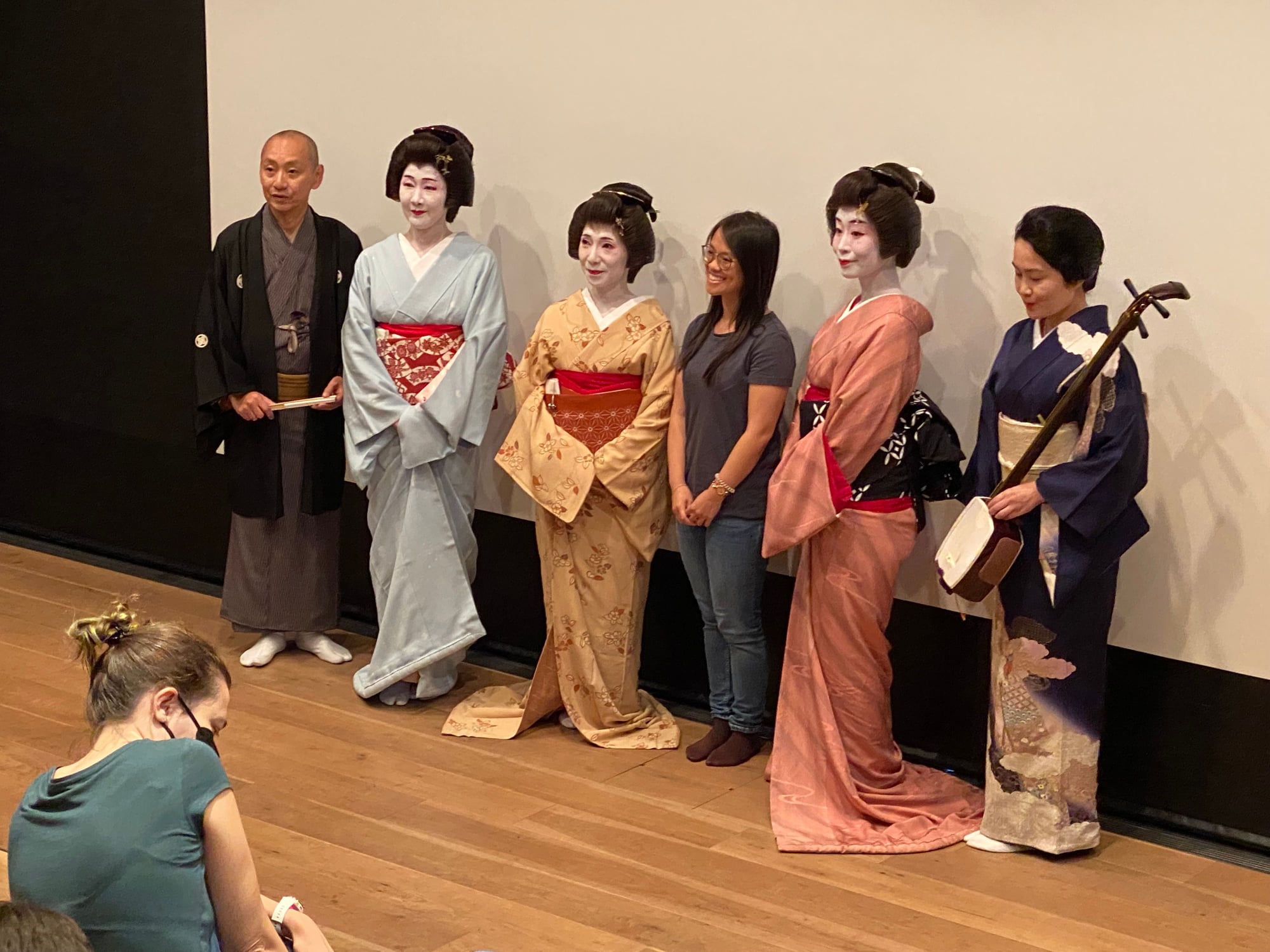
People posed with the geisha and musicians after the show
Ueno

This was new to us. To order lunch, you choose the meal through a machine and receive a ticket after paying for it. Upon entering, the waiter takes the order ticket and seats the customer.

Entry to the restaurant

Delicious!

Small, casual but excellent!
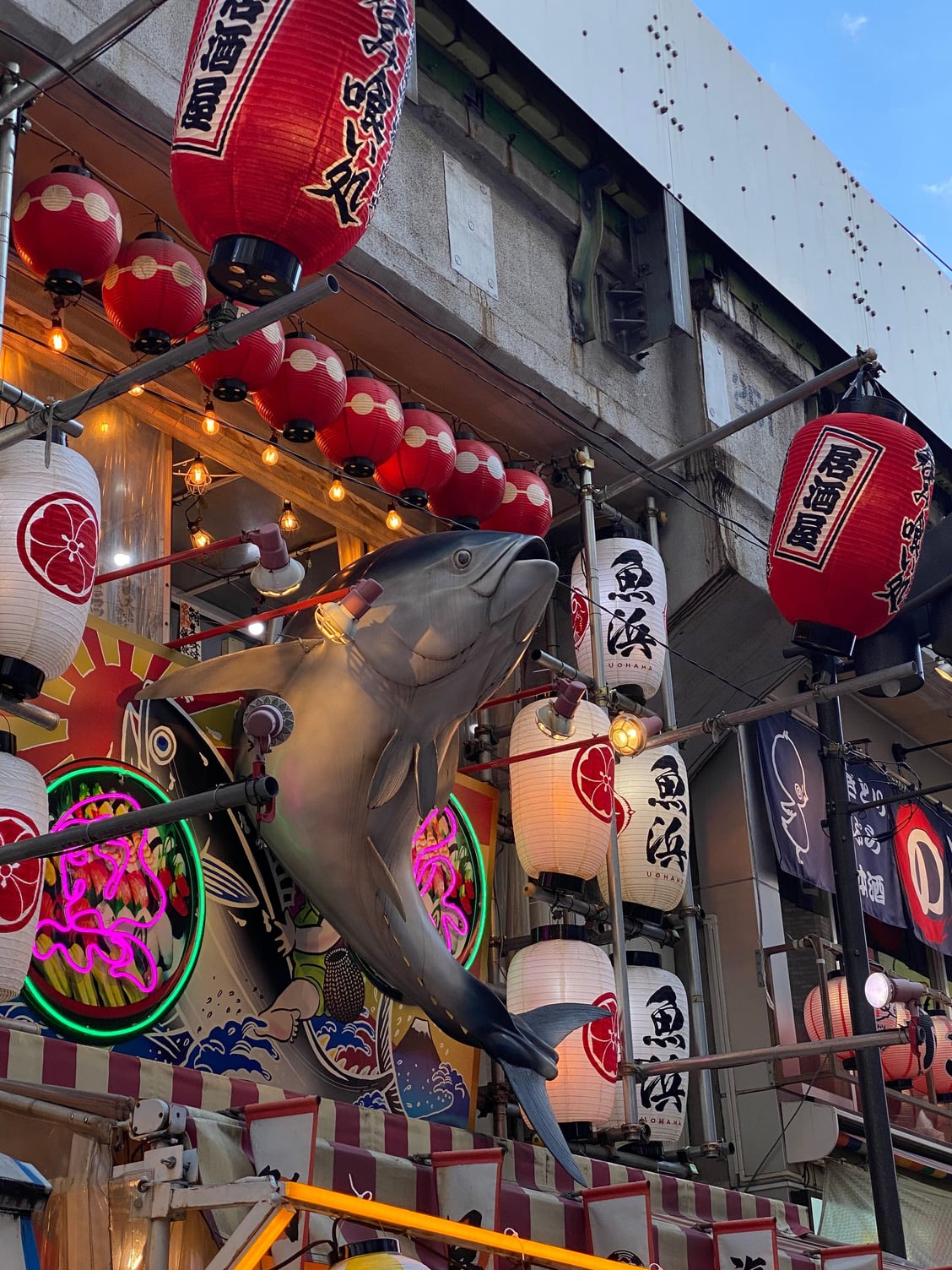
Approaching the bustling shopping street, Ameyoko

Approaching the bustling shopping street, Ameyoko. The chopsticks bounced up and down - quite a sight!

Along the bustling shopping street, Ameyoko

Along the bustling shopping street, Ameyoko

Along the bustling shopping street, Ameyoko

Along the bustling shopping street, Ameyoko




People posed with the geisha and musicians after the show
Ueno

This was new to us. To order lunch, you choose the meal through a machine and receive a ticket after paying for it. Upon entering, the waiter takes the order ticket and seats the customer.

Entry to the restaurant

Delicious!

Small, casual but excellent!

Approaching the bustling shopping street, Ameyoko

Approaching the bustling shopping street, Ameyoko. The chopsticks bounced up and down - quite a sight!

Along the bustling shopping street, Ameyoko

Along the bustling shopping street, Ameyoko

Along the bustling shopping street, Ameyoko

Along the bustling shopping street, Ameyoko
#14
Original Poster
Back to Asakusa - and the end of Day 1!

Asakusa street

View of Asakusa Shinto shrine, a 5-story Pagoda

Entry to Sensoji at night

Don Quijote (known as Donki) at night

Halloween festivities!

Delicious ramen - local restaurant

Asakusa street

View of Asakusa Shinto shrine, a 5-story Pagoda

Entry to Sensoji at night

Don Quijote (known as Donki) at night

Halloween festivities!

Delicious ramen - local restaurant
#15
Join Date: Sep 2012
Posts: 3,172
Likes: 0
Received 0 Likes
on
0 Posts
Youíre too kind, progol. So glad you were able to experience Senso-ji in peace and quiet and looks like you accomplished quite a bit on the first day. Iím also with you on the contrast between old and new. This is especially event in Japanese gardens that borrow from its surroundings and incorporate it into what the visitor sees; one good example is Hama Rokus in Tokyo.
#16
Join Date: Feb 2003
Posts: 3,372
Likes: 0
Received 0 Likes
on
0 Posts
Just a few comments. Do like Asakusa perhaps because it reminds me of Tokyo 40 years ago. Also there are more of what I consider traditional restaurants in Asakusa. The electronic tickets system for some restaurants appeared about 10 years ago and yours is a tourist friendly one as there is some English. Nice to be able to use the Suica card to pay at many such restaurants. Tendon which you photographed is one of my favorite foods. Also shopping is decent in the area for regular Japanese items. My favorite mom and pop Osembei store is in the area. My daughters spent over an hour in Don Quixote.It is apparently a Japanese dollar store. The Uniqlo store in Asakusa is apparently one of two such stores in Tokyo that does free embroidery on some items. My daughters think of Uniqlo clothes as being fashionable and inexpensive and of decent quality. I also see now why some knife stores in Kappabashi are asking people not to put back knifes after inspecting them. Your photograph show many knifes to be mis labeled. Great photos!
#17
Original Poster
tp, we hit the ground running on our first day, but we slowed down A LOT after that! It was really a pleasure to see Senso-ji without crowds and appreciate the sense of the temple. We were able to visit several times, and each time, we discovered something new. And that theme of the “old and new” is really one that captures Japan for me.
mjs, I read many descriptions of how Asakusa is more like an older Tokyo, which is what appealed to me. It’s most definitely a touristic center, but it had a wonderful energy - and, of course, we were away from the area when it was most crowded. The evenings were fun, with the busy restaurants and izakayas, and the evening entertainment behind the hotel was a delight. We both fully enjoyed the area. Funny about the knives in Kappabashi! I certainly didn’t know they were mislabeled! We did find that having the Suica was great.
More to come soon. I hope my intro wasn’t too long and wordy - it seems most of the folks who are posting about Japan on this forum have been there more than once, though I hope that my initial comments help other newbies.
mjs, I read many descriptions of how Asakusa is more like an older Tokyo, which is what appealed to me. It’s most definitely a touristic center, but it had a wonderful energy - and, of course, we were away from the area when it was most crowded. The evenings were fun, with the busy restaurants and izakayas, and the evening entertainment behind the hotel was a delight. We both fully enjoyed the area. Funny about the knives in Kappabashi! I certainly didn’t know they were mislabeled! We did find that having the Suica was great.
More to come soon. I hope my intro wasn’t too long and wordy - it seems most of the folks who are posting about Japan on this forum have been there more than once, though I hope that my initial comments help other newbies.
#18
Original Poster
Around Asakusa, from the Sacred to the Profane
One of the many things we loved in our travels through Japan was discovering the smaller shrines tucked away on a side street or otherwise hidden away. It was always fun to come upon them, as if we’d discovered something secret!


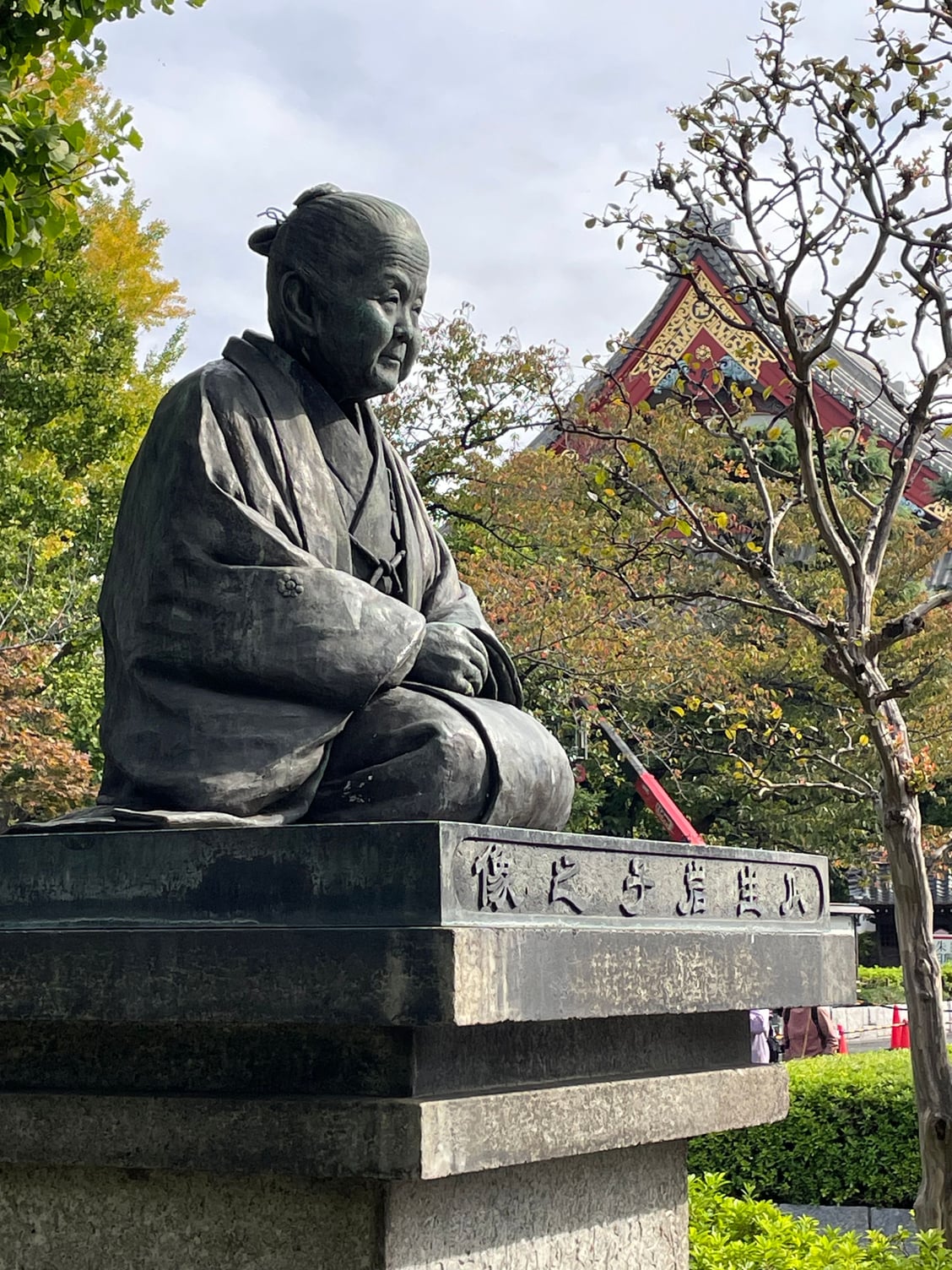

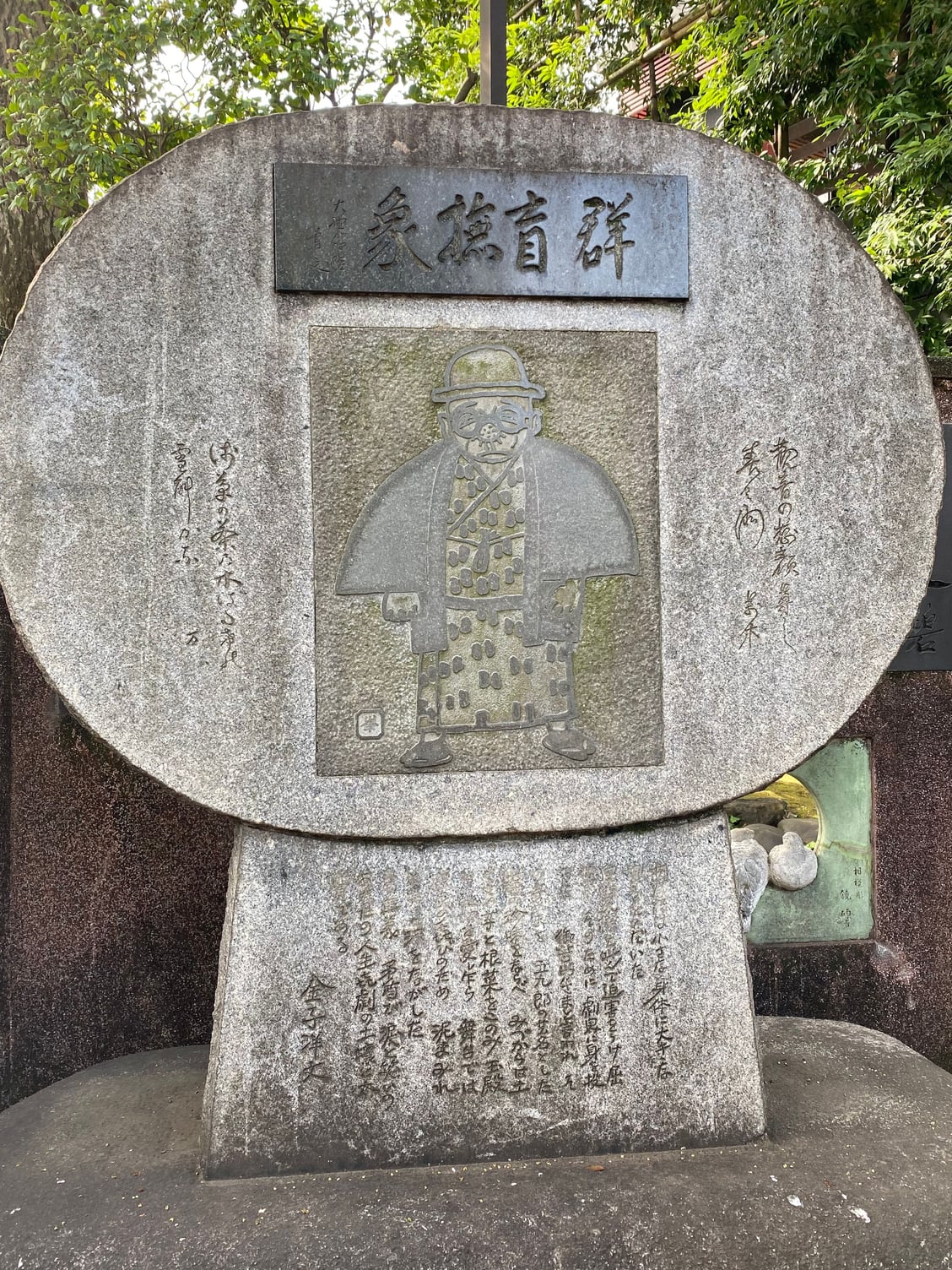







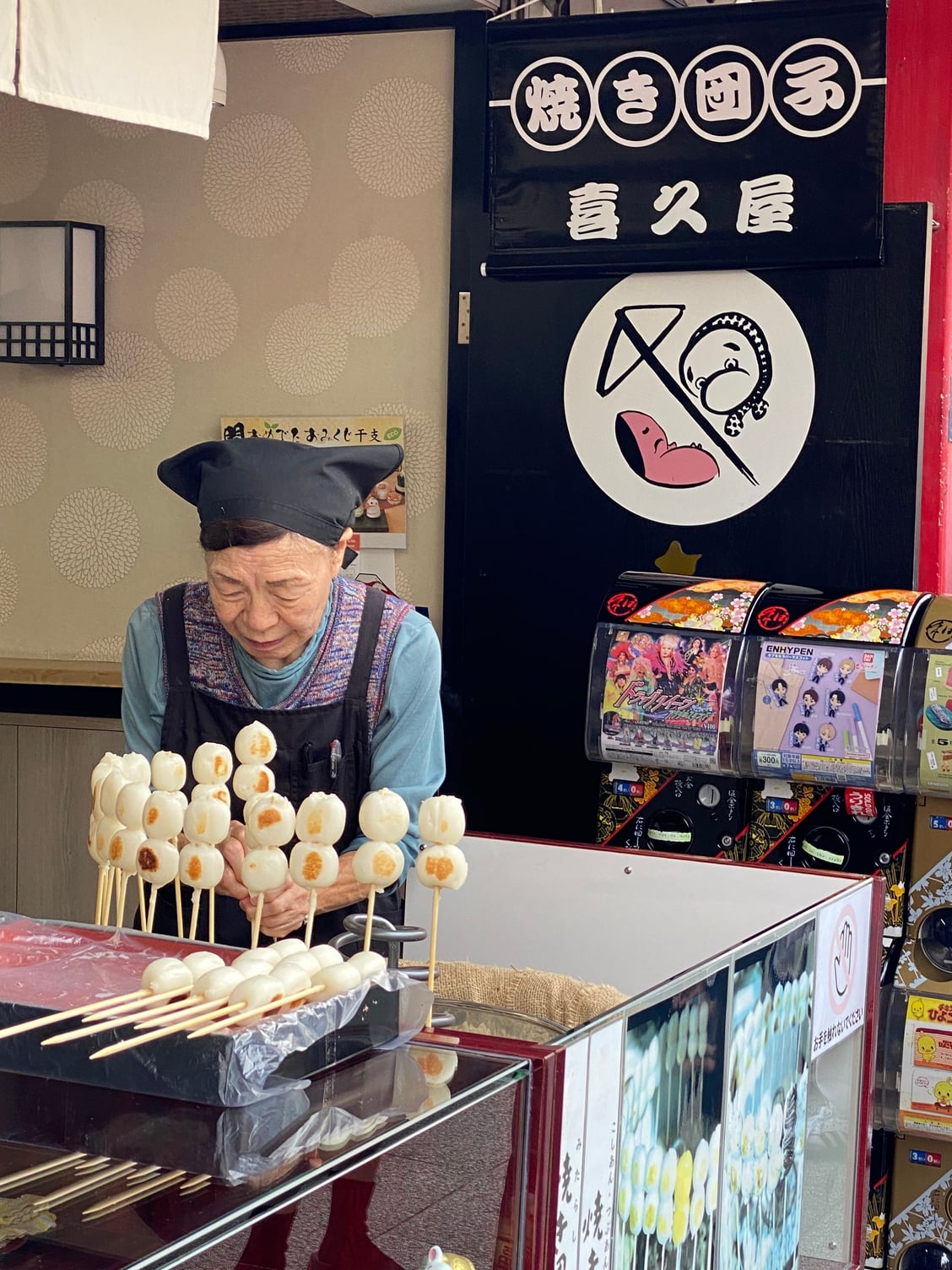

Evening around Asakusa - many people ended up joining in, too!

Evening around Asakusa

Halloween is big!

Halloween is big!
One of the many things we loved in our travels through Japan was discovering the smaller shrines tucked away on a side street or otherwise hidden away. It was always fun to come upon them, as if we’d discovered something secret!














Evening around Asakusa - many people ended up joining in, too!

Evening around Asakusa

Halloween is big!

Halloween is big!
#19
Join Date: Mar 2014
Posts: 5,013
Likes: 0
Received 0 Likes
on
0 Posts
I am just starting to read your report! So fascinating! I hope we make it to Japan some day. I am very, very surprised that Japan is really into Halloween!
Love your variety of photos - the temples, the women in traditional dress, the food, the window displays, such as what I call the "stuffed" people. The fish lanterns. Everything is so unique and so interesting.
I also like all the planning information that you included at the beginning, and why you chose what you did. It is very helpful to people who have never been to Japan.
Love your variety of photos - the temples, the women in traditional dress, the food, the window displays, such as what I call the "stuffed" people. The fish lanterns. Everything is so unique and so interesting.
I also like all the planning information that you included at the beginning, and why you chose what you did. It is very helpful to people who have never been to Japan.
Last edited by KarenWoo; Nov 27th, 2023 at 07:48 PM.
#20
Join Date: Mar 2014
Posts: 5,013
Likes: 0
Received 0 Likes
on
0 Posts
Progol, your comment (not sure if it's exact): "There were few "big" moments in our trip but so many small moments that added up to something special" resonated with me for several reasons. Not only because sometimes the small moments (completely unexpected and unplanned) on our trips made the trip more memorable, but also because of a novel I am currently reading that has nothing to do with Japan. Before I started reading your report, I underlined the following sentence: "Never underestimate the big importance of small things." And then I started reading your report! Wow! Deja vu!





